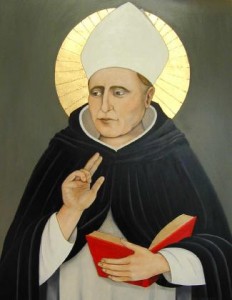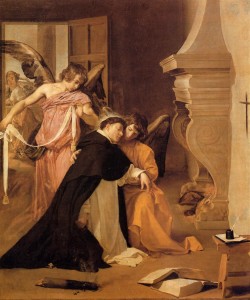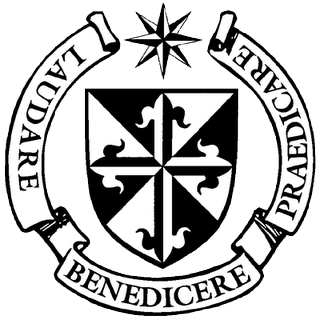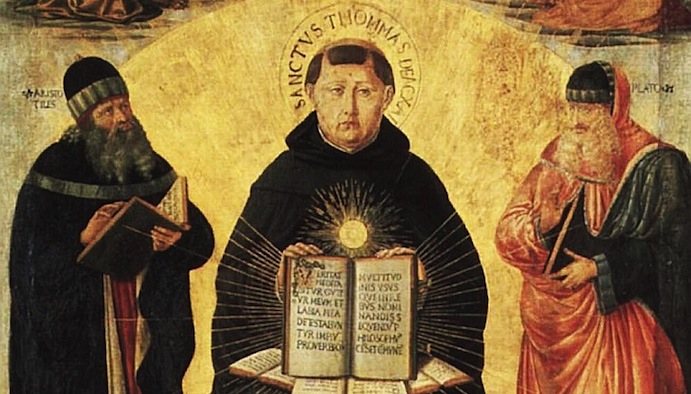SOME INTRODUCTORY NOTES ON
ST. THOMAS AQUINAS
In the following pages, I present some brief notes on St. Thomas Aquinas. I shall focus on five points: first, life of Aquinas; second, profile of his life; third, his works; fourth, relevance of St. Thomas, and five, some references (mainly the ones I have used here) on his life and works.
1. LIFE OF ST. THOMAS: HIGHLIGHTS
Thomas Aquinas (1225-1274) was born in Roccaseca, Italy, about 1225. He studied with the Benedictine Monks of Monte Cassino. When he was around 14 years old, he studied at the University of Naples. Five years later, he joined the Dominican Order: in 1244, at 19, against the wishes of the family. In 1245, he went to Paris to pursue the institutional studies; in Paris, he studied under Albert the Great. His classmates called Thomas “the dumb ox.â€
 Albert told them: “You call this man a dumb ox, but I tell you that the time will come when the bellowing of his doctrine will be heard to the ends of the earth.†In 1248, he went with Albert to Cologne, where he completed his studiers and was ordained to the priesthood. At 27, he went to Paris and taught at St. Jacques and later became professor of theology at the University of Paris. He also taught in different cities of Italy (Anagni, Orvieto, Rome, Viterbo). In 1269, Thomas returned to Paris to teach. He was considered a controversial teacher by some other teachers and professors: for some disciples of Averroes, because Thomas did not accept the doctrine on two truths (one philosophical and one theological); for traditionalists, because he was too liberal, especially by rationalizing faith too much. The Angelic Doctor defended that reason and faith are two sources of knowledge – a point underlined by John Paul II in Fides et Ratio, and also by Benedict XVI in some of his papal Addresses. Thomas was admired by many for his clarity, brevity and originality. In 1272 was called back to Naples to inaugurate a Dominican House of Studies, be the Regent of Studies and teach. He died on March 7, 1274, at the Cistercian Monastery of Fossanova between Naples and Roma, when he was on his way to the Second Council of Lyons.
Albert told them: “You call this man a dumb ox, but I tell you that the time will come when the bellowing of his doctrine will be heard to the ends of the earth.†In 1248, he went with Albert to Cologne, where he completed his studiers and was ordained to the priesthood. At 27, he went to Paris and taught at St. Jacques and later became professor of theology at the University of Paris. He also taught in different cities of Italy (Anagni, Orvieto, Rome, Viterbo). In 1269, Thomas returned to Paris to teach. He was considered a controversial teacher by some other teachers and professors: for some disciples of Averroes, because Thomas did not accept the doctrine on two truths (one philosophical and one theological); for traditionalists, because he was too liberal, especially by rationalizing faith too much. The Angelic Doctor defended that reason and faith are two sources of knowledge – a point underlined by John Paul II in Fides et Ratio, and also by Benedict XVI in some of his papal Addresses. Thomas was admired by many for his clarity, brevity and originality. In 1272 was called back to Naples to inaugurate a Dominican House of Studies, be the Regent of Studies and teach. He died on March 7, 1274, at the Cistercian Monastery of Fossanova between Naples and Roma, when he was on his way to the Second Council of Lyons.
Thomas is a great humanist, philosopher and theologian, saint and mystic. The Church has given him many titles, including Angelic Doctor, Doctor of the Church, Doctor of Divinity, Universal Doctor, and Doctor of Humanity. His distinctive sign is the sun, because “while he gives the light of science to the intellects, he lights up the wills with the flame of virtue.â€
Throughout his life, Thomas had a single commitment, that is, the unshakeable and uncompromising commitment to search for the truth. Indeed, he was “veritatis unice amator,†lover of truth only! Every truth, he wrote, “regardless of who said it, comes from the Holy Spiritâ€: “Omne verum a quocumque dicatur, a Spiritu Sancto est†(Summa Theologiae, I-II, 109, 1 ad 1).
I wish to mention here two symbolic stories. Thomas is a young boy, maybe between 6 and 9 years of age. He was then studying with the Benedictine monks of Monte Cassino. One day his teacher asked him: “Thomas, what do you dream?†The boy answered quickly: “I look for God, master, what is God?â€
After having written much and well, Thomas had a special encounter with Christ, a vision of God, which prompted the theologian to utter humbly: “All that I have written is straw.†It was on December 6, 1273 during the Mass of St. Nicholas in the Church of St. Dominic in Naples. After this vision, just a few months before his death, Thomas did not write anything more and even abandoned the instruments of writing. (Bruno Forte wrote a little lovely book on the silence of Thomas from December 6, 1273 to March 1274. In 71 pages, theologian Forte contemplates the mystery of Thomas’ silence and expresses it meditatively in prose and verse.)
Â
2. PROFILE OF SAINT THOMAS AQUINAS
Thomas Aquinas was tall, probably 1.90 meters, and stout, and sensitive to cold weather. (Main source for this section: S. Ramirez, OP).
He was very intelligent, had great memory and was very industrious and curious. (This curiosity he had since he was a child. He asked his teacher at Monte Cassino: “Quid est Deus?†Later on he will speak of disordered curiosity as a vice opposed to the virtue of studiositas, or studiousness, which includes healthy curiosity) He loved to read, meditate and contemplate. He avoided useless chatting. Following his Father Dominic, he only talked with God or of God. His favorite pastime during recreation was to stroll in the cloister or garden. He was, we are told, very affable and kind.
Thomas was called by his students “il buon fra Tommaso†(Dante Alighieri, in Ramirez, 58). He was pure of heart and sober in eating and drinking. He loved poverty and was happy with his poor habit and poor pair of shoes. He had the heart of a mother towards the poor.
He was very humble as a student, a teacher and a member of the community. He refused high ecclesiastical positions.
He was a patient man. In Paris, at the beginning of his teaching and especially during his second turn as master, he was maligned and called all kinds of names. He never reacted. However, he was strong and energetic in promoting and defending the truth.
Thomas was prudent, “prudentissimus Frater Thomas.†He was a man of prayer, a contemplative man. In his life, there was no opposition but integration between prayer and study, contemplation and action (see II-II, 181, 3). He was very devoted to the Holy Eucharist and celebrated one Mass and heard another Mass daily. He was very devoted to Our Mother Mary. (At margins of his Summa Contra Gentiles, we find repeatedly in his hand-writing the words Ave Maria.) He was also devoted to the angels about whom he wrote incredibly well. He was, moreover, devoted to the saints and in particular to St. Agnes. He read every day a chapter of the Collationes of Cassian: “to maintain alive in his heart the fire of devotion and the love of God.†A. Sertillanges says that “learning goes hand in hand with virtue-ing.†So it was in the case of Thomas Aquinas.
He had the gift of tears and cried when meditating on the Passion and Death of Jesus, and at Compline, when singing “Do not abandon us, Lord, when we are old†(Ps 70).
Thomas was – and continues to be – an outstanding teacher and writer. He was also a great preacher. We are told that Thomas preached a series of sermon during the Lent of 1273 at the Church of San Domenico in Naples. John Coppa, a contemporary of St. Thomas tells us that “almost the whole population of Naples went to hear his sermons every day.†And his first biographer, William Tocco affirms: “He was heard by the people with such reverence that it was as if his preaching came forth from God.â€
After Thomas passed away (March 7, 1274), St. Albert the Great proclaimed: “My son Thomas, flower of the world and light of the Church has passed away.â€
The three qualities of the spirituality of St. Thomas are, according to Mons. Grabmann: wisdom, charity and peace.
Thomas Aquinas was canonized by John XXII in Avignon on July 18, 1323. He was declared Doctor of the Church by Pius V in 1567. He was named Patron of Catholic Schools by Pope Leo XIII.
St. Thomas is doctor and saint. He has been described as “the wisest of the saints and the holiest of the wise†(Cardinal Bessarion).
3.WORKS OF ST. THOMAS
(Main source: S. Ramirez, OP)
It is almost unimaginable that Thomas could write so much in so short a time: he died at 49, and wrote the last 21 years of his life – from 1252 to 1273. In these two decades, Thomas wrote 891 lessons on the books of Aristotle, 803 lessons on Sacred Scriptures, 850 chapters on the Gospels (his Catena Aurea), 463 chapters in his Summa contra Gentiles, 2.991 articles on the Master of the Sentences Peter Lombard, about 1200 chapters of his many minor works (opuscula), 510 articles in Disputed Questions, 260 articles in Quodlibet Questions and 2.669 articles in the Summa Theologiae. Chesterton is right when he says: “Thomas produced books enough to sink a ship or to stock a library.â€
Thomas writes on about every science: from grammar to homiletics, metaphysics, dogma, morals, casuistry. In the last years of his life, Thomas had 3 to 4 secretaries to write his lessons. Probably, he dedicated 16 hours per day to do his work. His life was focused on two things: prayer and study. He knew very well the Bible, the Sentences of Peter Lombard, the works of Aristotle, of the Pseudo-Dionisio and of St. Augustine. He enters into dialogue with everybody in search of the truth, the commitment of his life. His favorite authors are Aristotle and St. Augustine, but he did not exclude anyone, and he is most grateful to all, including those who taught some errors (II-II, 49, 3 ad 2; In II Metaphysicorum, lect. 9, n. 2.566). Moreover, a great innovator in many ways, Thomas was faithful to the magisterium of the Church.
Ramirez enumerates 130 works authored by Thomas. These works are of different importance, significance and volume. Thomas’ writings include the following:
- Commentaries to the Old (6) and the New (17) Testaments;
- Â Commentaries to philosophers, particularly to Aristotle (11);
- Commentaries to theologians – Peter Lombard, Boethius, Pseudo-Dionisio;
- Disputed questions (13) and Quodlibet questions ((11);
- Minor (opuscula) books of theology (22), and of philosophy (23);
- Lectures and sermons (15).
 Beside the Summa Theologiae (the textbook of theology for centuries) his other major works are: Summa contra Gentiles and Compendium Theologiae. He wrote Summa contra Gentiles between the years 1258 and 1265. It is a synthesis of Christian doctrine for non-Christians, particularly Jews and Muslims. His Compendium Theologiae (1261-1269) is also a synthesis of Christian doctrine, but for Christians.
Beside the Summa Theologiae (the textbook of theology for centuries) his other major works are: Summa contra Gentiles and Compendium Theologiae. He wrote Summa contra Gentiles between the years 1258 and 1265. It is a synthesis of Christian doctrine for non-Christians, particularly Jews and Muslims. His Compendium Theologiae (1261-1269) is also a synthesis of Christian doctrine, but for Christians.
4. RELEVANCE OF ST. THOMAS AQUINAS
St. Thomas Aquinas continues to be very important and significant for theology and, in particular, for the Dominicans for whom he is essential part of their tradition. St. Thomas continues to be important also for the whole Church, which made him Doctor of the Church and Patron of Catholic Universities.
The Dominican sage is still – as Vatican II calls him – a special master (OT, 16) and guide (GE, 10). In his encyclical Veritatis Spendor (1993), Pope John Paul II describes him as outstanding philosopher and Paul VI in Lumen Ecclesiae, 10 as apostle of truth (also John Paul II, Fides et Ratio, 44). The Angelic Doctor is “light for the Church and the whole world†(Paul VI, Lumen Ecclesiae, 1974; see Sapientia Christiana, art. 71 footnote 23, and art. 80 footnote 26; in both footnotes we read: “See especially the letter of Paul VI on Saint Thomas Aquinas Lumen Ecclesiae of 20 November 1974â€; Canon Law, 252, # 3). Benedict XVI pictures him as a model theologian. Great theologians have recommended him, including Karl Rahner, Chenu, Congar, Schillebeeckx, Gustavo Gutierrez and Clodovis Boff.
Certainly, Thomas is not “the exclusive doctor†of the Church: there are 32 more doctors of the Church, including three women – only! The Catechism of the Catholic Church (1992, 1997), or CCC, quotes St. Thomas 61 times. Benedict XVI has pronounced 4 important addresses on St. Thomas in 2010, underlining his masterfulness in harmonizing faith and reason, and his Summa Theologiae (see specific references in number 5 below)).
As Dominicans, we study St. Thomas not to repeat him but to re-create him in our time. I quote the pertinent words of our brother Dominican Yves Congar:
St. Thomas is a master of thought, a model of loyalty and intellectual honesty, a man of dialogue, the symbol of open-mindedness, the genius of reality. We should remain faithful to his spirit… I doubt that a better intellectual guide can be found… I am distressed when I see young clerics, sometimes even seminary professors trying to invent a new synthesis from scratch – “to meet the needs of modern man,†as they say… St Thomas is proposed as a master (by Vatican II). This does not mean simply repetition and the exclusion of other theologians. Rather it means that we study under his guidance; we follow his spirit
Writes Benedict XVI: “In our catechesis on the Christian culture of the Middle
Ages, we now turn to St. Thomas Aquinas, known as the Doctor Communis, whose life and teaching have always been revered as an outstanding model for theologians… Among the many commentaries and systematic works, the great Summa Theologiae reveals his critical gifts and his conviction of the natural harmony between faith and reason†(Address: June 2, 2010).
5. SOME REFERENCES
As we all know, there are hundreds of excellent books on St. Thomas. I just mention the following:
- Aquinas Thomas, Summa Theologiae (I, II, III).(See works of St. Thomas Aquinas in different web sites, Universidad de Navarra: http://www.corpusthomisticum.org/ Id., The Aquinas Catechism. Manchester: New Hampshire, Sophia Institute Press, 2000.
- Benedict XVI, “Aquinas: Harmony between Reason and Faith,†Address: Vatican City: January 28, 2010; “On Thomas Aquinas,†Address: Vatican City, June 2, 2010; “On Aquinas Philosophy and Theology,†Address: Vatican City, June 16, 2010; “On the Summa Theologiae,†Address: Vatican City: June 23, 2010.
- Diogenes Allen and Eric O. Springsted, “Aquinas Program and Two Critics, Karl Barth and Process Theology,†in their book Philosophy for Understanding Theology, 2nd Ed. Louisville/London: Westminster John Knox Press, 1985, 2007, pp.103-112.
- Forment Eudaldo, Santo Tomás de Aquino. Su vida, su obra y su época. Madrid: BAC, 2009.
- Forte Bruno, El silencio de Tomás. Buenos Aires: Paulinas, 1999.
- Geffré Claude OP, and Thomas F. O’Meara, OP, Thomas Aquinas and Contemporary Thought, Ed. Richard Woods, OP, Illinois, River Forest: Priory of St. Dominic and St. Thomas, 1989, pp. 1-58.
- Grabmann Martin, The Interior Life of St. Thomas Aquinas. Milwaukee: The Bruce Publishing Company, 1951.
- Kerr Fergus, Thomas Aquinas. A Very Short Introduction. London: Oxford University Press, 2009
- Ramirez Santiago, OP, Introducción a Santo Tomás. Madrid: BAC, 1975.
- Spiazzi Raimondo, OP, Santo Tomás de Aquino. BiografÃa documentada de un hombre bueno, inteligente, verdaderamente grande, Traducida por Aristónico Montero, OP. Madrid: Edibesa, 2004.
- Torrell, Jean-Pierre, OP. Aquinas’s Summa. Background, Structure, & Reception, Trans. by Benedict M. Guevin, OSB. Washington, D. C.: The Catholic University Press, 2005.
- Gomez Fausto, OP, “Theology, Theology of Liberation and St. Thomas,†in his book Liberation Theology & Christian Liberation. Manila: UST Social Research Center, 1987, pp. 71-83; Id. “Relevance of St. Thomas Aquinas on Justice Today,†in his book The Journey Continues: Notes on Ethics and Bioethics. Manila: University of Santo Tomas, 2009, pp. 141-170.
F. Gomez Berlana, OP
St. Dominic Center of Studies
St. Dominic’s Priory
Macau, January 2012

